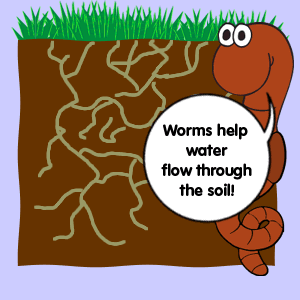North Carolina Worms Things To Know Before You Buy
North Carolina Worms Things To Know Before You Buy
Blog Article
The smart Trick of North Carolina Worms That Nobody is Talking About
Table of ContentsNorth Carolina Worms Can Be Fun For EveryoneThe Greatest Guide To North Carolina WormsThe North Carolina Worms StatementsGet This Report on North Carolina Worms
Instance: 1-gallon of worm castings to 4 gallons of potting mix. 1/2 cup in the base of the growing hole for smaller plants. 1 mug for bigger plants.
The enhancement of tea can likewise include raised microbial biomass to your soil. You can constantly side-dress your plants with worm spreadings at any time. Simply keep in mind, the microorganisms will die if exposed to UV rays (Sun), so be certain to cover the castings with an inch approximately of soil.
This frustrated them for many years until the screening methods came to be better. They discovered that plant growth and health displayed a Normal curve. It would certainly improve(with even more castings), degree off, and then decline. They were dumbfounded. They ultimately found that excess plant-growth hormonal agents were the culprit. As well many worm castings would certainly accelerate the growth to a rate that the plant could not recuperate from.
Excitement About North Carolina Worms
I have stated the virtues of worm castings for concerning 2000 words. Worm spreadings are no various. It takes time to develop top quality worm spreadings.
Worm spreadings definitely cost even more than chemical fertilizers. Worm spreadings are on the more affordable end of organic plant foods. (50 gallons per year) It is a much more difficult and really costly financial investment to create huge amounts of worm spreadings.

Creating a healthy and balanced soil might be the greatest advantage of worm castings. We went over worm castings NPK and also the appropriate nutrient evaluation that should use to worm spreadings.
Unknown Facts About North Carolina Worms
We chatted concerning some of the disadvantages associated with worm castings. I covered a lot of product in this write-up.
The upright burrows are usually open, although the worms cover the top with residue and excrement. Origins require oxygen for their growth, whereas they produce carbon dioxide that requires to leave the dirt.
Earthworms enhance porosity by 2 devices: (1) by developing long-term burrows, and (2) by improving dirt gathering. Aggregation is boosted by the blending of soil and natural issue in the earthworms' guts. Lake James Bait. These highly steady accumulations are deposited by some earthworms in their burrows, and by others at the surface of the dirt


In one more research study, earthworms were estimated to take in 4 to 10 percent of the leading 6 inches of the dirt every year. Dirt compaction minimizes the porosity of the dirt.
North Carolina Worms - The Facts
Normal earthworm populations can easily eat 2 lots of dry issue per acre annually, partly absorbing and mixing it with dirt. The relevance of earthworms to mix surface area deposit with dirt becomes really clear in dirts that do not have any kind of earthworms. A lot of our Pennsylvania dirts contend least some earthworms, and the result of their total lack, consequently, can not be noted.
(https://www.adlandpro.com/ad/43159579/North-Carolina-Worms__Other_438__around_atlanta.aspx)In these dirts, the development of topsoil with reasonable raw material content did not happen, leading to bad plant development. As soon as the cause was established, the government of the Netherlands started a campaign to present earthworms. After the intro of the earthworms, a dark topsoil layer was created, and plant development increased substantially.
They live primarily from partially decayed raw material that is already incorporated in the soil. They eat their means with the dirt, creating horizontal burrows that they loaded with their waste matter. These types consume huge amounts of dirt that they blend with digested crop deposit in their intestines. or anecic types live in permanent upright burrows that can be 5 or 6 feet deep.
These varieties ingest significant amounts of dirt that they mix with absorbed residue in their intestines. Their excrement is primarily transferred at the surface of the soil.
Report this page